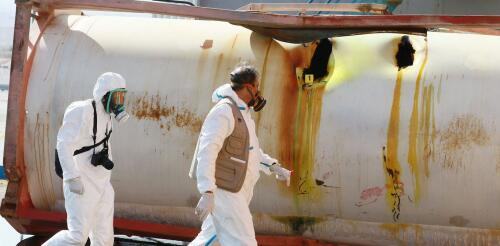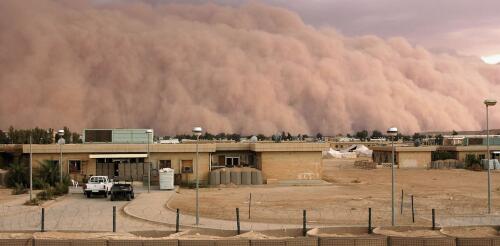Respiratory illness
Many people encounter chlorine in their daily lives, whether it’s as an ingredient in household bleach or an additive that sanitizes water in swimming pools. Chlorine is also used as an antiseptic, a bleaching agent in the production of paper and cloth, and to kill microorganisms in drinking water. But this familiar chemical is also extremely toxic. And because it’s ubiquitous in many industries across the U.S., it often is released in chemical accidents and spills. As a pharmaceutical scientist, I study ways in which chemicals and other materials affect the human body. Currently, I am working to develop therapies to counteract chlorine gas exposure and to understand the mechanism by which chlorine harms people. One promising therapy that we are developing is inhalable nanoparticles that counteract lung damage following chlorine gas exposure. A common and dangerous chemical Chlorine is an extremely toxic and widely used chemical. In the U.S., it is one of the top...
Humans have contended with dust storms for thousands of years, ever since early civilizations appeared in the Middle East and North Africa. But modern desert dust storms are different from their preindustrial counterparts. Around the world, deserts now increasingly border built structures, including urban dwellings, manufacturing, transportation hubs, sewage treatment and landfills. As a result, desert dust lifts a growing load of airborne pollutants and transports these substances over long distances. This is happening throughout the Global Dust Belt, an arid to semiarid region that stretches from western China through Central Asia, the Middle East and North Africa. Similar storms occur in the U.S. Southwest and central Australia. Global pattern of dust frequency estimated from weather records, 1974-2012. Shao et al., 2013, CC BY-ND To our thinking, modern desert dust storms have been overlooked...
Cooks love their gadgets, from countertop slow cookers to instant-read thermometers. Now, there’s increasing interest in magnetic induction cooktops – surfaces that cook much faster than conventional stoves, without igniting a flame or heating an electric coil. Some of this attention is overdue: Induction has long been popular in Europe and Asia, and it is more energy-efficient than standard stoves. But recent studies have also raised concerns about indoor air emissions from gas stoves. Academic researchers and agencies such as the California Air Resources Board have reported that gas stoves can release hazardous air pollutants while they’re operating, and even when they’re turned off. A 2022 study by U.S. and Australian researchers estimates that nearly 13% of current childhood asthma cases in the U.S. are attributable to gas stove use. Dozens of U.S. cities have adopted or are considering regulations that bar natural gas hookups in new-construction h...


